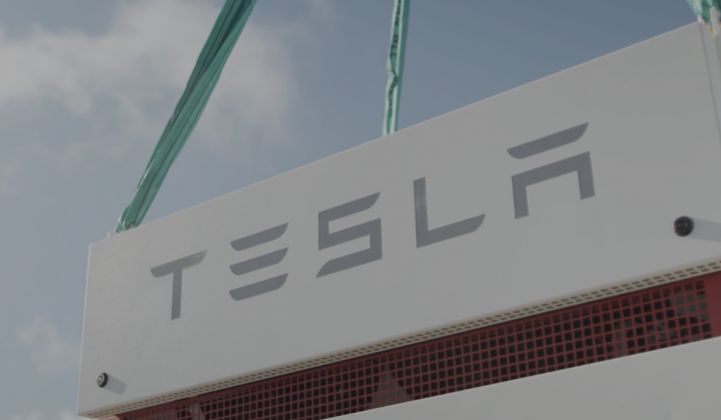Figures show that Tesla’s "big battery" in South Australia is so good at delivering frequency control ancillary services (FCAS) that there might not be much room left for copycat projects.
As first reported in RenewEconomy, in its first four months, the 100-megawatt, Neoen-owned Hornsdale Power Reserve, built with Tesla batteries, snapped up 55 percent of all FCAS revenues in South Australia, according to an analysis by consulting firm McKinsey & Company, based on data published by the Australian Energy Market Operator.
In addition to gobbling up FCAS revenues, the McKinsey research showed that Hornsdale’s arrival cut ancillary services prices by 90 percent across South Australia’s eight FCAS markets.
The problem is that Hornsdale has done such a good job of mopping up FCAS revenues that it might have significantly altered the business case for further battery plants.
Exactly how much Hornsdale makes for its owners is not clear, since the figures are not disclosed and in the McKinsey analysis, “We just looked at the societal impact,” Godart van Gendt, the McKinsey expert associate partner who carried out the analysis, told GTM.
However, it is clear that a 90 percent drop in FCAS pricing is going to make things hard for any future players looking to make their money from ancillary services.
“The second and third batteries being built will need to take account of the fact that the ancillary services revenue continues to come down,” said van Gendt.
There are other sources of revenue for battery plant operators, of course. Even the Hornsdale plant doesn’t only rely on FCAS.
According to the Australian Energy Market Operator (AEMO), it has been active in all the markets available on the National Electricity Market, which is the interconnected power system stretching down the east of Australia from Queensland to Tasmania. This includes energy trading on the spot market.
Nevertheless, it is true that frequency response is seen as a particularly low-hanging fruit for utility-scale batteries, and, for instance, helped create the business case for most of the early battery plants installed on the PJM Interconnection transmission system in the U.S.
Van Gendt questioned whether grid-scale battery projects would work in Australia without FCAS revenues. “In 2018, it wouldn’t be a slam-dunk,” he said.
Australia pays more for frequency regulation overall
Van Gendt said it was important to bear in mind that the pricing drop did not necessarily mean Australians were paying less for FCAS on the grid.
While prices had declined, the volume of FCAS payments had gone up, potentially because the Australian grid is having to work harder to balance a growing fraction of intermittent generation from solar and wind power.
Thus, “to report that the cost has gone down would be inaccurate,” van Gendt said.
To give an idea of what the Hornsdale price reductions mean, RenewEconomy said that if the FCAS payments for the first four months of 2017 had been paid at the prices seen this year, Australians would have paid AUD $35 million (USD $26 million) less.
AEMO, meanwhile, said that in the final quarter of 2017, FCAS market costs were AUD $58 million (USD $44 million), making it the second-highest quarter on record. But things could have been even worse without Hornsdale.
“The entry of two new participants (Hornsdale Power Reserve and EnerNOC) contributed to an AUD $13 million (USD $10 million) reduction compared to Q3 2017,” said AEMO.
That’s not bad considering Hornsdale may have cost around $50 million, based on a statement by Tesla founder Elon Musk. It is also pretty good going for an asset that represents less than 2 percent of the 5.4 gigawatts of dispatchable capacity listed by AEMO in South Australia in 2017.
Opening up new revenue streams
For the broader energy storage market, the good news about Hornsdale is that it may help open up further energy storage revenue streams, such as capacity market trading or wholesale tariff arbitrage, by propping up the grid so it can accommodate more renewable generation.
The need for these kinds of services could grow with an expansion in renewable energy generating capacity. But adding that capacity relies on having a robust grid.
The Australian electricity network has been singled out for criticism precisely because of National Electricity Code Administrator rules on frequency control. Observers say that the NECA rules for frequency control are lax compared to those in other markets.
That could make it difficult to maintain grid control in the face of rising renewable energy generation, GTM revealed last year.
If Tesla’s big battery can help bring frequency control back into line, though, then it might be easier to add more wind and solar into the equation — boosting the business case for more batteries, even if FCAS is off the table.




